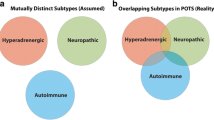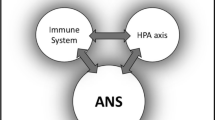Summary
The cardiostimulatory effects of prenalterol, a beta-1-adrenoceptor partial agonist, were studied in vivo and in vitro and compared to those evoked by isoprenaline, a full agonist, and to those of other partial agonists.
In the anaesthetized rat, prenalterol and terbutaline were found not to elevate the myocardial cyclic AMP content; this was in sharp contrast to isoprenaline. Both partial agonists did, however, produce significant effects on heart rate.
In the anaesthetized cat, prenalterol exhibited chronotropic and inotropic intrinsic activities of 88 and 76% respectively in relation to isoprenaline. No statistically significant increase in myocardial cyclic AMP content could however be detected.
Prenalterol did not stimulate adenylate cyclase significantly in the cat myocardial homogenate. This was also true of the beta-2-adrenoceptor selective partial agonist procaterol. In this preparation, isoprenaline, noradrenaline and adrenaline acted as full agonists. Furthermore, prenalterol produced a concentration-dependent inhibition of isoprenaline-activated adenylate cyclase.
Our data indicate that maximal cardiac stimulation occurs at a low level of adenylate cyclase activation and low myocardial cyclic AMP concentration when provoked by a full beta-adrenoceptor agonist. The maximal physiological effects of a partial agonist such as prenalterol may consequently be achieved at a marginal activation of the adenylate cyclase.
The present data may thus support the hypothesis of a large beta-adrenoceptor reserve for full agonists in the heart.
Similar content being viewed by others
References
Ariniego R, Waagstein F, Mombay B, Hjalmarsson Å (1979) Haemodynamic effects of a new beta-1-receptor agonist in acute myocardial infarction — A useful antidote to unwanted cardiac effects of beta-blocking agents. Br Heart J 42:139–146
Carlsson E, Dahlöf C-G, Hedberg A, Persson H, Tångstrand B (1977) Differentiation of cardiac chronotropic and inotropic effects of beta-adrenoceptor agonists. Naunyn-Schmiedeberg's Arch Pharmacol 300:101–105
Carlsson E, Ek L, Kopp U, Åblad B (1978) Prenalterol, — A new orally active cardiac compound (1266) VIII World Congress of cardiology, Tokyo, Japan, Sept 17–23
Cheng Y-C, Prusoff WH (1973) Relationship between the inhibition constant (Ki) and the concentration of inhibitor which causes 50% inhibition (I50) of an enzymatic reaction. Biochem Pharmacol 22:3099–3108
Drummond GI, Hemmings SJ (1972) Inotropic and chronotropic effects of dibutyryl cyclic AMP. Adv Cycl Nucl Res 1:307–316
Drummond GI, Severson DL (1979) Cyclic nucleotides and cardiac function. Circ Res 44:145–153
Fellenius E, Wallin B, Hultmark D (1976) Heart rate changes and c-AMP levels in relation to beta-adrenergic responses in the rat in vivo. Abstract 08-3-250. X Int Congr Biochem, Hamburg, July 25–31
Gilman AG (1970) A protein binding assay for adenosine 3′,5′-cyclic monophosphate. Proc Natl Acad Sci USA 67:305–312
Hedberg A, Andersson T, Boström S-L, Carlsson E, Fellenius E, Lundgren B (1979) Are cardiac effects of beta-adrenoceptor agonists mediated by adenylate cyclase activation? Acta Univ Tamperensis 10:44
Hedberg A, Minneman KP, Molinoff PB (1980) Differential distribution of beta-1-and beta-2-adrenergic receptors in cat and guinea pig heart. J Pharmacol Exp Ther 212:503–508
Hu EH, Venter JC (1978) Adenosine cyclic 3′,5′-monophosphate concentrations during the positive inotropic response of cat cardiac muscle to polymeric immobilized isoproterenol. Mol Pharmacol 14:237–245
Kaumann AJ (1978a) On spare beta-adrenoceptors for inotropic effects of catecholamines in kitten ventricle. Naunyn-Schmiedeberg's Arch Pharmacol 305:97–102
Kaumann AJ (1978b) Heart beta-adrenoceptors. In: O'Malley BW, Birnbaumer L (eds) Receptors and Hormone action, vol III. Academic Press, New York, pp 133–177
Kaumann AJ, Birnbaumer L (1974) Studies on receptor-mediated activation of adenylatcyclases. IV. Characteristics of the adrenergic receptor coupled to myocardial adenylase cyclase; stereospecificity for ligands and determination of apparent affinity constants for beta-blocker. J Biol Chem 249:7874–7885
Krause E-G, Halle W, Kallabis E, Wollenberger A (1970) Positive chronotropic response of cultured, isolated rat heart cells to N6-2′-O-dibutyryl-3′,5′-adenosine monophosphate. J Mol Cell Cardiol 1:1–10
Kukovetz WR, Pöch G, Wurm A (1975) Quantitative relations between cyclic AMP and contraction as affected by stimulation of adenylate cyclase and inhibition of phosphodiesterase. Adv Cycl Nucl Res 5:395–414
Lockwood RH, Lum BKB (1974) Selective adrenergic stimulant actions of 1-isopropylamino-3-(-2-thiazoloxy)-2-propanol (ITP) in anaesthetized cats. Life Sci 14:73–81
Lowry OH, Rosebrough NJ, Farr AL, Randall RJ (1951) Protein measurement with the Folin phenol reagent. J Biol Chem 193:265–277
Minneman KP, Hegstrand LR, Molinoff PB (1979a) The pharmacological specificity of beta-1-and beta-2-adrenoceptors in rat heart and lung in vitro. Mol Pharmacol 16:21–33
Minneman KP, Hegstrand LR, Molinoff PB (1979b) Simultaneous determination of beta-1-and beta-2-adrenergic receptors in tissues containing both receptor subtypes. Mol Pharmacol 16:34–46
Minneman KP, Hedberg A, Molinoff PB (1979c) Comparison of beta-adrenergic receptor subtypes in mammalian tissues. J Pharmacol Exp Ther 216:502–508
Osnes JB, Øye I (1975) Relationship between cyclic AMP metabolism and inotropic response of perfused rat hearts to phenylephrine and other adrenergic amines. Adv Cycl Nucl Res 5:415–433
Øye I, Langslet A (1972) The role of cyclic AMP in the inotropic response to isoprenaline and glucagon. Adv Cycl Nucl Res 1:291–300
Podzuweit T, Dalby AJ, Cherry GW, Opie LH (1978) Cyclic AMP levels in ischaemic and nonischaemic myocardium following coronary artery ligation. Relation to ventricular fibrillation. J Mol Cell Cardiol 10:81–94
Roszkowski AP, Strosberg AD, Miller LM, Edwards JA, Berkoz B, Lewis GS, Halperu O, Fried JH (1972) Selective beta-adrenergic myocardial stimulant. Experientia 28:1336–1337
Rönn O, Graffner C, Johnsson G, Jordö L, Lundborg P, Wikstrand J (1979) Haemodynamic effects and pharmacokinetics of a new selective beta-1-adrenoceptor agonist, prenalterol, and its interaction with metoprolol in man. Eur J Clin Pharmacol 15:9–13
Scott DHT, Arthur GR, Boyes RN, Scott DB (1979) Cardiovascular effects of prenalterol (H 133/22) in normal man. Br J Clin Pharmacol 7:365–370
Stephenson RP (1956) A modification of receptor theory. Br J Pharmacol 14:379–393
Vauquelin G, Lacombe ML, Guellaen G, Strosberg AD, Hanoune J (1976) Tazolol [1-isopropylamino-3-(2-thiazoloxy)-2-propanol] as a beta-adrenergic blocker. Biochem Pharmacol 25:2605–2608
Venter JC, Ross J, Jr, Kaplan NO (1975) Lack of detectable change in cyclic AMP during the cardiac inotropic response to isoproterenol immobilized on glass beads. Proc Natl Acad Sci USA 72:824–828
Venter JC (1979) High efficiency coupling between beta-adrenergic receptors and cardiac contractility. Direct evidence for “spare” beta-adrenergic receptors. Mol Pharmacol 16:429–440
Wollenberger A, Ristan O, Schoffa G (1960) Eine einfache Technik der extrem schnellen Abkühlung größerer Gewebestücke. Arch Ges Physiol 270:399–412
Yabuuchi Y (1977) The beta-adrenoceptor stimulant properties of OPC 2009 on guinea pig isolated tracheal, right atrial and left atrial preparations. Br J Pharmacol 61:513–521
Yamashita S, Takai M, Yabuuchi Y (1978) Actions of procaterol (OPC 2009), a new beta-2-adrenoceptor stimulant, on pulmonary resistance, contractions of the soleus muscle and cardiovascular system of the anaesthetized cat. J Pharm Pharmacol 30:273–279
Author information
Authors and Affiliations
Rights and permissions
About this article
Cite this article
Hedberg, A., Carlsson, E., Fellenius, E. et al. Cardiostimulatory effects of prenalterol, a beta-1 adrenoceptor partial agonist, in vivo and in vitro. Naunyn-Schmiedeberg's Arch. Pharmacol. 318, 185–191 (1982). https://doi.org/10.1007/BF00500479
Received:
Accepted:
Issue Date:
DOI: https://doi.org/10.1007/BF00500479




